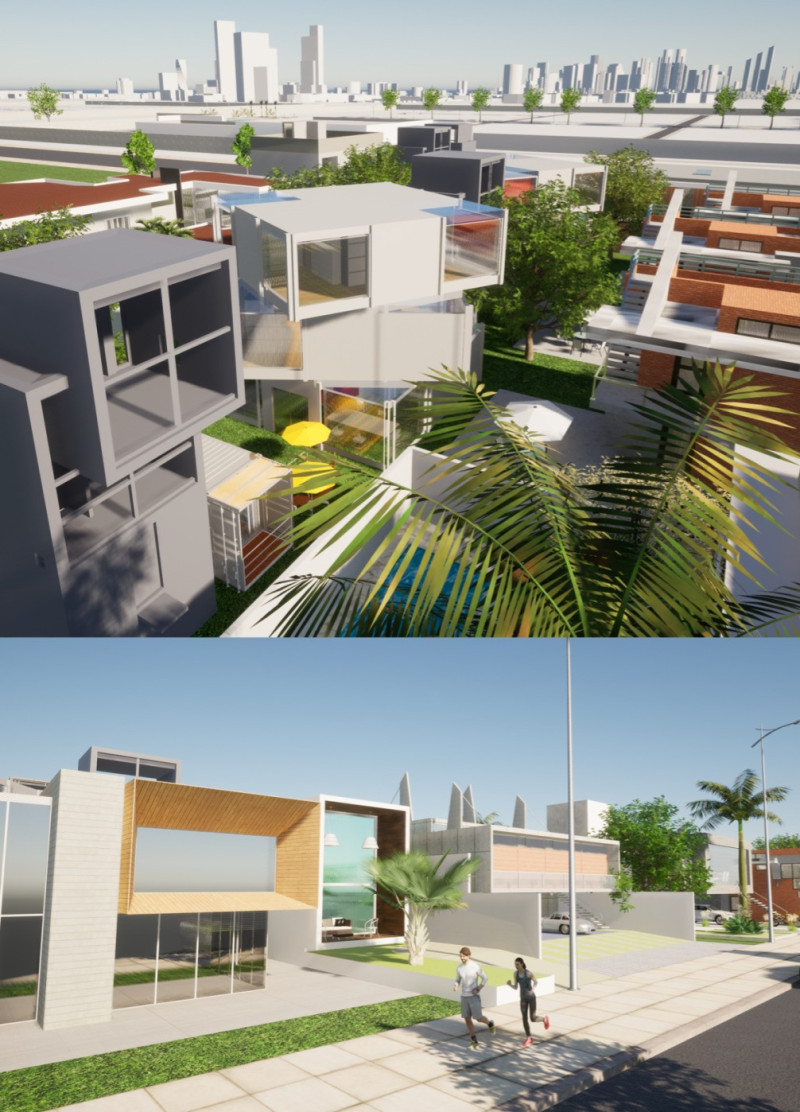5 key facts about this project
The overall function of the project revolves around creating a comfortable and engaging living space for families and individuals. By integrating communal areas and private residences, the architecture fosters a sense of belonging and togetherness among its inhabitants. The layout of the buildings is strategically designed to encourage social interaction through shared outdoor spaces, enhancing community ties and promoting a healthy lifestyle.
Key elements of the design include spacious layouts that feature large windows and open-plan configurations, facilitating abundant natural light and making the most of the surrounding views. The use of glass walls not only strengthens the connection between the interior spaces and the natural environment but also allows for passive solar heating and cooling, reducing energy consumption. This focus on environmental performance underscores a commitment to sustainability, making it a significant aspect of the project's architectural philosophy.
The material palette employed throughout the project is diverse yet cohesive, combining elements such as concrete, glass, brick, wood, and stone in an environmentally sensitive manner. Concrete serves as the primary structural material, providing durability and modern aesthetics, while brick accentuates warmth and a sense of place, linking the new designs to the local context. The incorporation of wood into the façade and internal finishes introduces a tactile quality that softens the overall appearance and reflects natural beauty. Stone paving materials enhance the outdoor areas, creating inviting pathways and communal gathering spaces.
One of the unique design approaches of the project is its emphasis on flexibility and modularity. The residential units are designed with adaptable layouts, allowing for various configurations that can cater to the evolving needs of residents. This part of the architectural design encourages personalization and experimentation, which is particularly appealing to younger families and individuals seeking dynamic living solutions.
Additionally, the integration of landscaping around the buildings promotes biodiversity and enhances the overall aesthetic appeal of the environment. Green roofs and landscaped terraces draw attention to ecological benefits, such as stormwater management and improved air quality. These design elements not only elevate the visual aspects of the project but also encourage residents to engage with nature in their daily lives.
Throughout the development, special attention has been paid to accessibility and inclusivity, ensuring that common spaces are designed to accommodate all users. Thoughtful circulation patterns and ample seating areas create an inviting atmosphere for residents and visitors alike. The project ultimately embodies a vision of connected urban living, where architecture serves as a facilitator for both community engagement and individual well-being.
For those interested in understanding the intricacies of this architectural project, diving deeper into the architectural plans, sections, and design details is essential. Exploring these elements will provide valuable insight into the innovative approaches that define this work and highlight the architectural ideas that contribute to its success. This project stands as a compelling example of what modern residential architecture can achieve within an urban context, and further exploration of its design may inspire future developments in similar environments.


 Denis Milani Adriano
Denis Milani Adriano 




















